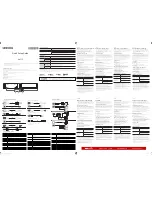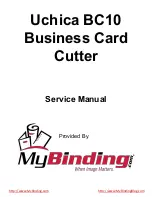
11
5. Valve Removal and Pre-Inspection
General Handling:
After the pressure relief
valve is removed from
the installation it should
be transported to the
shop for inspection,
testing, maintenance,
and resetting. Careful
handling in transit is
important, as rough
handling can change
the pressure setting or deform the pressure
relief valve parts so they cannot be set or
function properly. Flanges on the piping and
flange faces on the valve should be protected
so that gasket faces are not damaged. Large
valves should be handled with suitable rigging
equipment to avoid dropping or rough handling.
Pressure relief devices should not be stocked in
a careless manner and, where practical, they
should be segregated and not stored with
heavy pipe fittings or other types of valves.
Pressure relief valves should be treated as
delicate instruments because their accurate
functioning is very important to safe plant operation.
Because cleanliness is essential for the satisfactory operation and
tightness of a pressure relief valve, all necessary precautions should be
taken to keep out foreign materials. Valves which are not installed soon
after repair should be closed off properly at both inlet and outlet flanges.
Particular care should be taken to keep the valve inlet and internals
absolutely clean. Preferably, valves should be stored indoors or in locations
where dirt and other forms of contamination are at a minimum. Valves
should be handled carefully and not subjected to heavy shocks. If due
consideration is not given to this point, some internal damage or
misalignment can result and seat tightness may be adversely affected.
Store, transport and install valves with the stem in the vertical position.
In practice, a repaired pressure relief valve including one that has been
only cleaned or readjusted is called upon to provide the same degree of
protection as a new valve. It follows that maintenance personnel must be
trained to a level of proficiency that enables them to restore a valve to
original condition and function. It is recommended that historical records
be established and maintained including test reports. This will provide data
to determine the frequency of inspection and repair for various services.
One excellent publication for reference on pressure relieving devices is the
American Petroleum Institute’s (API)
Recommended Practice RP 576,
Inspection of Pressure-Relieving Devices
. The use of original manufac-
turer’s replacement parts is necessary to maintain new valve performance,
capacity flow and warranty. Farris Engineering expressly voids its warranty
and will not be responsible for faulty valve operation if non-factory
replacement parts or methods are utilized in product repair.
Field Removal
A visual inspection of pressure relief valves should be made when the
valves are first removed from the system. Many types of deposits or
corrosive debris may be loose and drop out from the pressure relief valve
while it is being transported to the shop. When fouling is a frequent
problem, it may be desirable to collect samples for further testing and to
make notes regarding deposit location and appearance. Any obstructions
in the valve should be noted and corrected.
NOTICE
Only lift PRV vertically.
NOTICE
Do not lift the valve by
the lever.
Use properly designed
and rated rigging/lifting
equipment. Failure to do so
could cause serious injury
or death.
DANGER
Содержание 2600 Series
Страница 1: ...0713T R0 Series 2600 Maintenance Manual ...
Страница 47: ...47 Notes ...












































